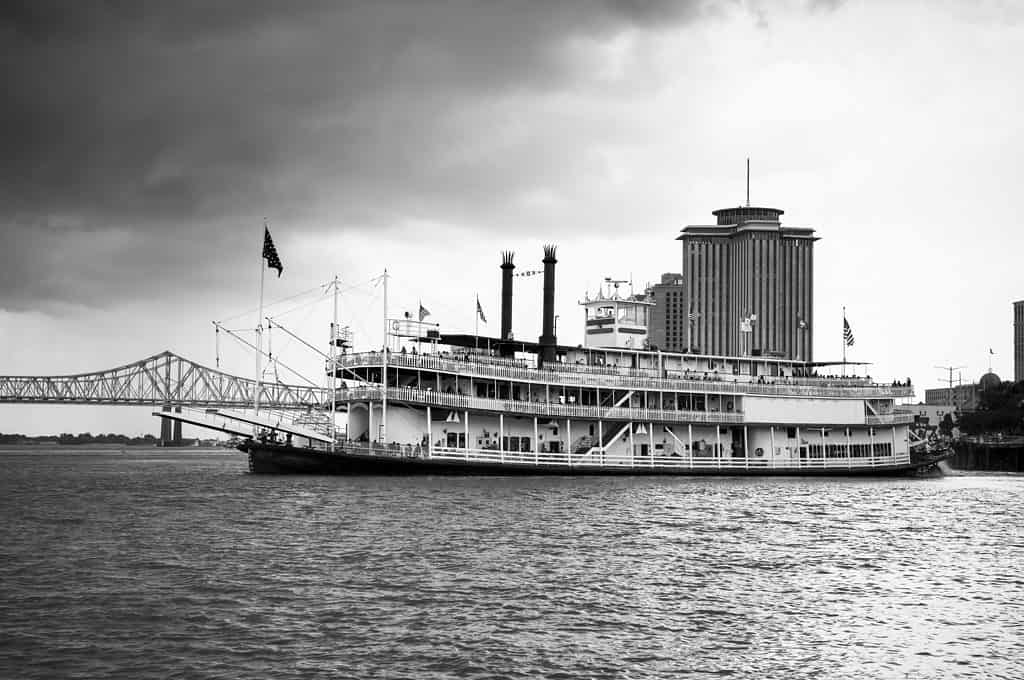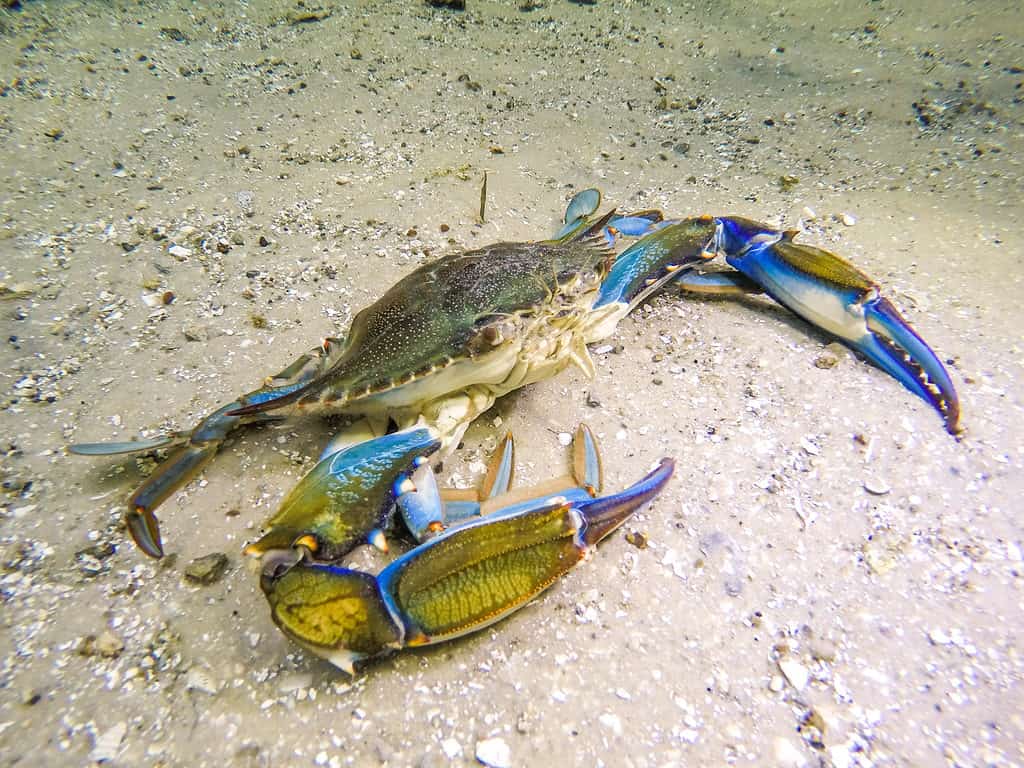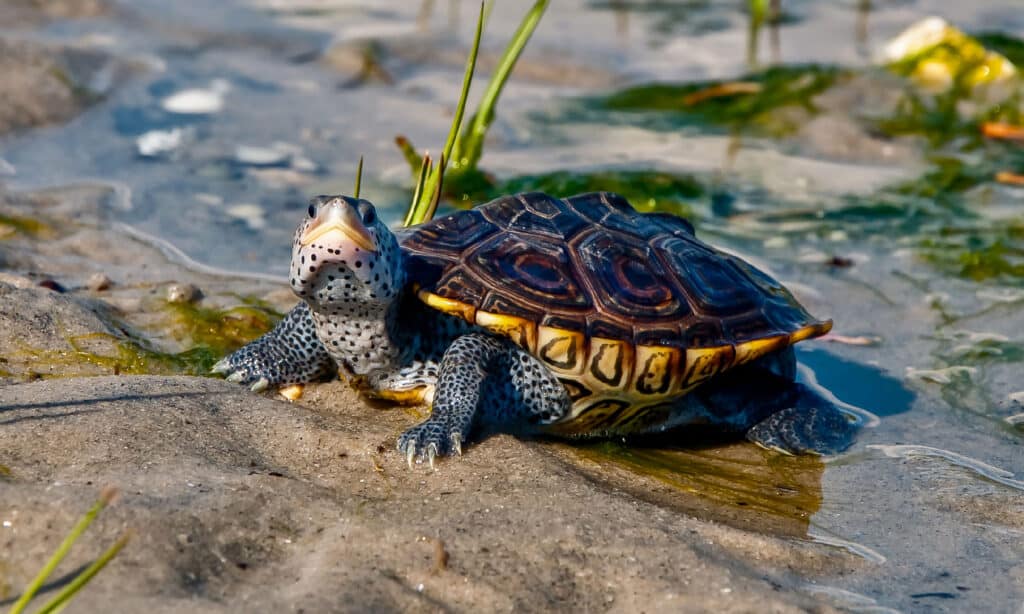Key Points:
- Port of New Orleans is located at the Mississippi River’s mouth, around 100 miles from the Gulf of Mexico.
- Its strategic location facilitates access to extensive inland waterways and rail networks.
- It is the ideal choice for commerce and transportation due to its advantageous position.
The Port of New Orleans has a secret universe brimming with life and intrigue under its busy surface. One can uncover a fascinating realm where a wide variety of species, some long extinct and others just discovered, live in the port’s gloomy depths. At the base of this bustling harbor, a brand-new universe wakes as the sun sets on the enormous Mississippi River.
Visitors and divers in the port can come across a broad variety of unusual and amazing animals. In this guide, we’ll explore the careful balance between predator and prey, the symbiotic interactions that define this ecosystem, and the significant influence of human activity on these prehistoric environments. But first, let’s go into a bit more depth about what the Port of New Orleans is.
What Is the Port of New Orleans?
The Port of New Orleans is a thriving maritime gateway that is situated on the Mississippi River in Louisiana. It has been crucial to the cultural and economic growth of the United States.
Physical Location and Relevance
The Mississippi River’s mouth is where the Port of New Orleans is located, 100 miles or so from the Gulf of Mexico. A wide network of inland waterways and rail networks is accessible from this strategic position, making it an obvious choice for commerce and transportation. The Napoleon Avenue Container Terminal, Julia Street Cruise Terminal, and New Orleans Cold Storage are just a few of the facilities that make up the port.
The port acts as a crucial hub for trade between the United States and worldwide markets as a significant international gateway. It transports a wide variety of cargoes, such as passengers on cruise ships, petroleum and chemical products, agricultural commodities, and containerized items. The port’s effective operations and transportation network greatly contribute to the region’s economic development by luring enterprises, generating jobs, and promoting cross-border trade ties.
Where Is the Port of New Orleans Located on a Map?
The Port of New Orleans is situated on the Mississippi River around 100 miles up the river from the Gulf of Mexico.
Historical Relevance
The Port of New Orleans has a long and intricate history that is entwined with the narrative of the city. New Orleans was established in 1718 and quickly developed into a thriving hub of trade and cultural interaction. Due to its strategic location close to the Mississippi River’s mouth where it opens up into the Gulf of Mexico (a.k.a. the Atlantic Ocean), it attracted traders from all over the world.
With the Louisiana Purchase in 1803, when the United States bought a sizable area of Louisiana from France, the port’s prominence increased even more. The Mississippi River played a crucial role in the movement of products and settlers westward, making New Orleans the entry point to the country’s western region. The port made it easier for the United States to spread abroad by linking its central regions to the rest of the globe.
The port was a key hub for the export of cotton throughout the 19th century and thus played a crucial role in the cotton trade. As steamship technology developed, New Orleans grew in importance as a port of call for vessels sailing across the Atlantic and the Gulf of Mexico. Its nautical traditions were further strengthened by the city’s distinctive fusion of cultures, which was inspired by French, Spanish, African, and Caribbean origins.

The Port of New Orleans is a historically significant port located on the Mississippi River near the Gulf of Mexico.
©lazyllama/Shutterstock.com
Current Developments and Challenges
To adapt to the needs of a worldwide economy, the Port of New Orleans has experienced major renovation and development in recent decades. The cruise terminal has seen significant expansion, attracting millions of passengers each year, while the container terminal has undergone improvements to allow for the efficient handling of containerized goods.
The port does, however, also confront several difficulties. The devastation caused by Hurricane Katrina in 2005 had a huge effect on port operations. To ensure the port’s infrastructure would be resilient against future natural catastrophes, extensive rehabilitation measures were made. The port also experienced difficulties during the COVID-19 pandemic, which affected many supply chains and distribution channels.
What Lives at the Bottom of the Port of New Orleans?
Complex marine species can be discovered living in the interplay of freshwater from the Mississippi River and saltwater from the Gulf of Mexico at the bottom of the Port of New Orleans. These creatures include a variety of species, each of which has evolved to live and thrive in this particular habitat.
Benthic Invertebrates
Numerous benthic invertebrates including worms, clams, snails, and crabs live on the bottom of the port. These organisms are crucial for the cycling of nutrients, stabilizing sediment, and acting as a food supply for higher trophic levels.
Fish
A variety of fish species are supported at the Port of New Orleans. Redfish, speckled trout, sheepshead, flounder, and drum are common species in the region. The brackish water conditions and the availability of food sources, such as smaller fish and crustaceans, are ideal for these fish species.
Blue Crabs
An important component of the environment of the port is the blue crab. These crustaceans can withstand a wide variety of salt levels due to their remarkable adaptability. By digesting smaller species and acting as food for larger predators, they play an important part in preserving the ecological balance.

Blue crabs are unique in that they can survive in freshwater and saltwater.
©Jen Helton/Shutterstock.com
Shrimp
The port region has a lot of shrimp as well. They are a valuable species commercially and contribute to robust commercial and recreational fishing activity. To take advantage of the abundant marine life, shrimp trawlers frequently operate close to the harbor.
Birds
Diverse bird species rely on the food supplies in the waterways even if they don’t live at the bottom of the port. In and around the harbor, it’s typical to observe brown pelicans, seagulls, herons, and terns scavenging for fish and crustaceans. They support biodiversity and act as proxies for the ecosystem’s general health.
Notably, conditions like water temperature, salinity, and sediment properties can have an impact on the precise composition and distribution of species at the bottom of the Port of New Orleans. Continued conservation efforts and pollution prevention measures also support preserving the ecological balance and ensuring the welfare of these marine species.
Rare Animals of the Port of New Orleans
While the Port of New Orleans is known for its diverse marine life, several rare or less commonly encountered animals inhabit or frequent the area.
American Alligator
Although not exclusive to the Port of New Orleans, the American alligator can be found in the surrounding wetlands, including those near the port. These impressive reptiles are apex predators and play a crucial role in the local ecosystem.
Diamondback Terrapin
The diamondback terrapin is a species of turtle that inhabits brackish and saltwater marshes. It can be found in the coastal areas near the port, particularly in marshy habitats and estuaries.

These funky turtles occasionally make an appearance in the Port of New Orleans.
©iStock.com/JasonOndreicka
Least Tern
The least tern is a small seabird that nests on sandy beaches and utilizes coastal habitats near the port for foraging. It is listed as a threatened species and its conservation is of importance in the region.
Gulf Sturgeon
The Gulf sturgeon is an ancient and rare fish species that is native to the Gulf of Mexico. It occasionally ventures into the Mississippi River, including the areas near the port. These large and migratory fish are known for their distinctive bony plates and can reach lengths of up to eight feet.
Mississippi Sandhill Crane
While not directly associated with the port, the Mississippi sandhill crane is a critically endangered bird species found in the Mississippi coastal region, including areas not far from the Port of New Orleans. It relies on wet pine savannas and marshes for its habitat.
Louisiana Pine Snake
The Louisiana pine snake is a nonvenomous snake species that is endemic to the state. It primarily inhabits pine forests and is considered rare and threatened due to habitat loss and fragmentation. While not commonly seen near the port, it can be found in the broader region of Louisiana.
What’s Wrong With the Port of New Orleans?
The Port of New Orleans, like many industrial and commercial hubs, faces several challenges and potential problems that require attention and proactive measures. From pollution concerns to infrastructural limitations, addressing these issues is crucial to ensure the port’s sustainable growth and minimize its impact on the surrounding environment.
Pollution and Environmental Impact
Industrial activities and shipping operations can contribute to water pollution at the port. Runoff from cargo handling, ship maintenance, and storage areas may contain contaminants that can degrade water quality. Reducing the discharge of pollutants and implementing effective water treatment and monitoring systems are essential for mitigating this issue.
The port’s operations, including vessel emissions, heavy machinery, and truck traffic, also contribute to air pollution. Airborne pollutants such as particulate matter, sulfur oxides, and nitrogen oxides can have detrimental effects on air quality and public health. Implementing emission reduction strategies, promoting cleaner technologies, and optimizing logistics to reduce idle times can help alleviate this problem.
Likewise, the constant movement of cargo and the operation of machinery and vehicles generate noise pollution, which can impact the quality of life for nearby residents and wildlife. Employing noise reduction measures and considering the use of quieter equipment can minimize the negative effects of noise pollution.
Infrastructure and Capacity
Maintaining an adequate channel depth is critical for accommodating larger vessels and ensuring efficient navigation. The continuous dredging required to sustain navigability poses both financial and environmental challenges. Striking a balance between deepening the channels and minimizing environmental impacts, such as sedimentation and disruption of aquatic habitats, is a complex task.
The growing volume of cargo and passenger traffic can lead to congestion on roads and terminals. Inefficient traffic flow can result in delays, increased emissions, and logistical challenges. Enhancing transportation infrastructure, optimizing logistics, and implementing intelligent traffic management systems can help alleviate congestion issues.
Climate Change and Resilience
The Port of New Orleans is vulnerable to the impacts of climate change, including sea-level rise and the increased frequency and intensity of storms. Rising sea levels can potentially threaten infrastructure and disrupt operations. Implementing adaptation strategies, such as coastal protection measures, resilient infrastructure design, and emergency response plans, is vital for mitigating these risks.
Just as well, hurricanes and severe weather events pose significant challenges to port operations and infrastructure. Planning and preparedness, including robust stormwater management systems, secure mooring facilities, and contingency plans, are crucial to minimize the potential damage and downtime caused by extreme weather.
Community and Social Impact
As the port and its associated industries expand, there may be pressures on nearby communities, potentially leading to displacement and gentrification. Ensuring equitable development and considering the social and economic impacts on local communities are vital aspects of responsible port management.
Port workers and neighboring communities may also face health and safety risks due to exposure to pollutants, noise, and heavy traffic. Implementing strict safety protocols, monitoring health impacts, and engaging in community outreach and education programs can help mitigate these concerns.
Addressing the Challenges
To tackle these issues, the Port of New Orleans collaborates with government agencies, industry stakeholders, and community organizations. Strategies and initiatives include the following:
- Implementing sustainable practices and technologies to reduce pollution and minimize environmental impacts.
- Investing in infrastructure improvements, such as deepening the channels, expanding storage facilities, and enhancing transportation networks.
- Incorporating climate resilience measures into planning and design, including flood protection infrastructure and sustainable land use practices.
- Engaging in partnerships and stakeholder collaborations to address social and community concerns, fostering dialogue and inclusivity.
- Prioritizing research and development to identify innovative solutions for environmental and operational challenges.
By addressing these challenges holistically and proactively, the Port of New Orleans can continue to thrive as a vital economic hub while minimizing its ecological footprint, enhancing community well-being, and contributing to a sustainable future.
Interesting Facts
- Given that it was established in 1718, the Port of New Orleans is one of the nation’s oldest ports. It has seen centuries of commerce and cross-cultural interaction.
- Over 500 million tons of freight travel through the port’s terminals on average each year, handling an astounding volume of cargo. Petroleum, agricultural products, and containerized items are all included in this.
- New Orleans, the birthplace of jazz, and its port have a close connection to the thriving music industry. The port frequently holds jazz festivals and live concerts, enhancing the city’s cultural atmosphere.
- The Port of New Orleans is one of the busiest cruise ports in the United States, where multiple cruise companies provide trips to a variety of Caribbean locations and other places.
- From 1967 until 1972, the World Trade Center in New Orleans, which is close to the harbor, had the title of being the tallest structure in the city. It features a distinctive modernist style and provides expansive views of the port and the Mississippi River.
- During the renowned Mardi Gras festival, the Port of New Orleans is important. It is where many Mardi Gras-themed ships disembark, returning partygoers to the center of the celebrations.
- One of the world’s oldest continually running streetcar lines is located on St. Charles Avenue, which is close to the harbor. Travelers may ride the streetcar to discover New Orleans’ quaint neighborhoods and famous sites.
- Several recognizable bridges, such as the Crescent City Connection and the Huey P. Long Bridge, link the Port of New Orleans to the east bank of the Mississippi River. These bridges provide spectacular views of the river and the city skyline in addition to serving as essential traffic routes.
The photo featured at the top of this post is © Fotoluminate LLC/Shutterstock.com
Thank you for reading! Have some feedback for us? Contact the AZ Animals editorial team.







